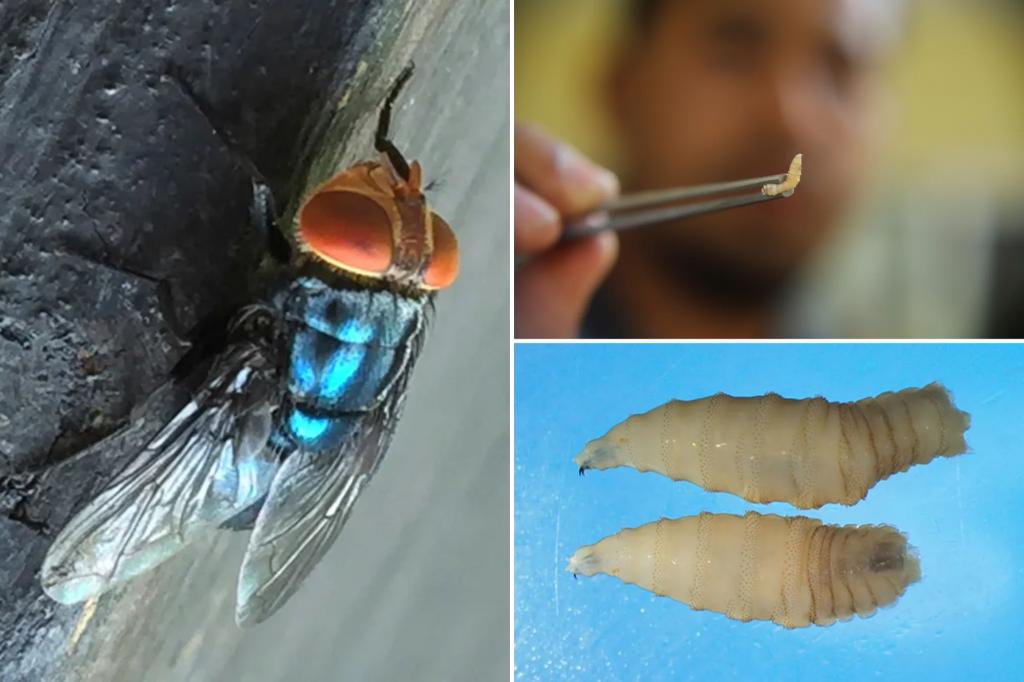A person in Maryland was recently infected by the flesh-eating New World screwworm after traveling to El Salvador, US health officials confirmed this week.
The blowflies primarily affect livestock — human cases are rare. In a screwworm infestation, also known as a myiasis, female flies lay eggs in a fresh wound that quickly hatch into larvae.
These maggots burrow into and feed on living tissue, potentially resulting in extensive tissue damage, bacterial infections and even death if unaddressed.
A US Department of Health and Human Services spokesman said this week that the “risk to public health in the United States” from this latest case is “very low.”
Here’s what you need to know about this parasitic disease as an outbreak rages on in Central America and Mexico.
What is New World screwworm illness?
Historical records show that the New World screwworm — scientific name Cochliomyia hominivorax — posed a problem to livestock in the US as early as 1825.
The pest became a major issue in 1933 when it migrated from the Southwest to the Southeast via a shipment of infested animals, causing widespread livestock death.
In the 1960s, the US employed the sterile insect technique — where millions of lab-raised sterile male flies are released to mate with wild females so they can’t lay viable eggs.
The New World screwworm was “largely eradicated” in the US thanks to these efforts, until a small 2016 outbreak occurred among endangered deer in the Florida Keys.
Over 188 million sterile flies eliminated that infestation in 2017.
The latest outbreak began in Panama in 2023 before spreading throughout Central America and reaching Mexico.
What are the symptoms?
- Maggots in or around an open wound
- Unexplained skin wounds that are painful or bleeding and don’t heal
- A wound that keeps getting larger and deeper
- The unnerving sensation of larvae moving in the nose, mouth or eyes
- A foul-smelling odor at the wound site
Treatment
The larvae must be removed from the wound.
Experts advise against trying to take care of them yourself, as surgery may be needed.
Implications of the latest human case
There was a case last year of a Florida cancer survivor who became sick from screwworms after visiting the Dominican Republic for over a week.
He noticed facial swelling, pain and nasal discharge.
Doctors surgically removed 100 to 150 larvae that were so large that they clogged the hospital’s suction machine.
The Centers for Disease Control and Prevention recommends taking extra precautions when traveling to outbreak-affected countries, especially if you have a weakened immune system.
Suggestions include monitoring wounds and keeping them clean and covered, wearing long-sleeved shirts and pants that have been treated with an insecticide containing 0.5% permethrin and sleeping indoors.
Read the full article here

